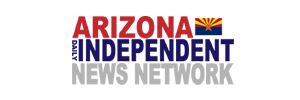
The same teachers unions who locked kids out of their classrooms for two years—and who have pushed radical political curricula and opposed parental rights and basic transparency in education—are back at it. This time, they’re working their magic to destroy high-quality charter schools and block effective reading instruction for kids.
They deserve to be defeated.
Last week, union-aligned organizers at BASIS Tucson North succeeded in turning the campus into Arizona’s first unionized charter school. They joined as a new chapter of the American Federation of Teachers (AFT) in an effort to create a beachhead of union control over the independent governance of Arizona’s 560 public charter schools.
At the same time it’s working to turn charter schools into carbon copies of failed district schools, AFT is also unleashing its muscle nationally against states’ efforts to ensure phonics-based instruction for public school students.
Indeed, in a recent report, “Why Some Teachers’ Unions Oppose ‘Science of Reading’ Legislation,” the national journal Education Week chronicled unions’ opposition to lawmakers’ attempts to align state expenditures with instruction that actually promotes literacy. As Education Week observed, “Decades of studies have shown that the most effective way to teach young children how to [read] is through phonics instruction,” and “more than two dozen states” have laws on the books ensuring public schools actually deliver instruction accordingly.
But for unions such as AFT, it is apparently the feelings of staff—not students’ basic ability to read—that are paramount. The Ohio AFT president, for example, called stipulations around basic reading instruction “a slap in the face to educators,” even as scholars have noted the techniques many of these educators (trained by progressive colleges of education) are using are “basically a fancy way of saying, we’re allowing kids to guess at words.” Indeed, even the New York Times has acknowledged regarding the practice promoted by progressive-dominated colleges of education and union-dominated districts: “At times, it has included dubious strategies, like guiding children to guess words from pictures.”
Unsurprisingly, at the very same time they are resisting efforts to ensure effective reading instruction for students, the unions simply offer a familiar platitude. The Ohio AFT head declared, for instance, “Our teachers want to do what’s best—we’re huge proponents of following the science… Of course we want to follow the science when it comes to the research in reading.”
But such union leaders seem to have the same notion they did during COVID: that “following the science” means exercising raw political power to oppose the needs of kids whenever they happen to collide with union preferences. Just as scholars found that union influence—not COVID transmission rates—drove school reopenings during the pandemic, the unions’ current lip service to science is about as reassuring as the abysmal student outcomes those unions are producing in deep-blue cities like Chicago.
There is no doubt that curricular variation is vital to the public charter school landscape, and government should not be permitted to co-opt private or home-based instruction. But for government-
operated schools with the implicit seal of approval of the state, there should be no doubt that the purpose of investing taxpayer money in K-12 education is to promote at least the basic literacy and numeracy of students—not to provide a subsidy for powerful union organizers.
It is for this reason—as yet another among many—that state lawmakers ought to step in and ensure transparency of the materials and methods used in government-operated schools. Whether it’s woke or simply a waste—if inferior content is being pushed on our kids, then parents and the public have the right to know about it. The Academic Transparency model policy created by the Goldwater Institute, where I work, would achieve this reality by requiring schools’ content to be simply listed online. Unsurprisingly, union howls against such basic curriculum transparency echo their opposition to being told what to do when it comes to early reading instruction.
The union takeover of BASIS Tucson North threatens to corrupt one of the highest-performing charter chains in the nation and to bring the same wasteful and destructive policies pushed by unions elsewhere—such as policies that trap teachers into paying union dues or that force schools to pay teachers to engage in union lobbying rather than actually teach students. Indeed, whether in Arizona or across the country, activist organizers claiming to oppose “top-down” guidance from state lawmakers have simply invited new masters over our kids in the form of union commissars. Unfortunately, these same self-serving activists have already explicitly rejected student learning as their priority—and once again, it shows.
Matt Beienburg is the Director of Education Policy at the Goldwater Institute. He also serves as director of the institute’s Van Sittert Center for Constitutional Advocacy.
